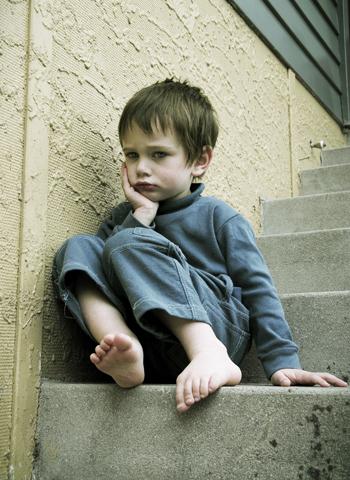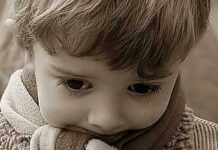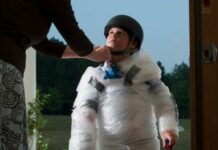Adult psychosis and childhood psychosis are different in themselves. In adults it usually presents in various clinical forms, such as schizophrenia, thought disorders, or as they used to say: manic-depressive psychosis (not to be confused with bipolar disorder). The childhood psychosis usually occurs in autism. There are authors who consider it synonymous, and others who do not, because autism usually occurs from birth and psychosis can develop later. In addition, in child psychosis there are no delusions and hallucinations since this requires a certain level of development that children do not have. From this article, we want to guide you to better understand how psychosis presents in childhood.
The childhood psychosis usually occurs in autism. There are authors who consider it synonymous, and others who do not, because autism usually occurs from birth and psychosis can develop later. In addition, in child psychosis there are no delusions and hallucinations since this requires a certain level of development that children do not have. From this article, we want to guide you to better understand how psychosis presents in childhood.
Index
- How does psychosis appear in childhood?
- With what symptoms does psychosis appear in early childhood?
- Symptoms during development.
- Other associated disorders.
How does psychosis appear in childhood?
- Psychosis that occurs early in childhood(before six years of age) is usually reflected as: Autism, Asperger’s disorder, Rett’s disorder, childhood disintegrative disorder and profound developmental disorder (PDD).
- Psychosis that occurs in later childhood(6 to 12 years), usually presents as: late psychosis 5-6 years, psychosis 10-11 years, psychosis with encapsulated delusions.
With what symptoms does psychosis appear in early childhood?
- During the first year of life, parents describe their children as “easy” babies, who do not cry, who do not distort, who do not show interest in the adult figure and who are happy when they are alone. Absence of smile and absence of anxiety before strangers (presenting itself as autism).
- During the second and third year of life, they do not have contact with the environment, nor with the mother, who feels as if her son does not recognize her. The little boy’s gaze is “empty”, as if absent. The adult may feel watched, as if your child is glancing at you. The child uses objects with repetitive manipulations and stereotypes. Human figures can unleash aggressiveness and break them. The burning cube symptom may appear(touch an object and quickly withdraw your hand). He does not present relationships with other children, as with the adult, he only manipulates them as if they were objects. He is indifferent to the game. Strengthening the relationship between equals can cause violent crises. Does not throw arms(presenting as autism).
Symptoms during development
- Motor behaviors. Unusual gestures for age, specific motor behaviors such as stereotypes (repetitive movements), instability with much agitation in movement (getting on tables or chairs for example), gestural clumsiness. There is no postural adjustment.
- Intellectual disorders. It does not always have to be accompanied by mental retardation.
- Language disorders. There may be a total absence of language or its appearance delayed, although it is usually not very understandable (autism). Humming, distortions in language, verbal stereotypies, when there is satisfactory language there may be regressions in speech. Delayed or particular language. It gives the feeling that you are deaf. In all cases, language is not usually with a communicative function, although on occasions, the psychotic child can obey simple orders.
- Rapid mood swings, acute distress, anxiety, crisis of laughter, intolerance of frustration, aggressive crisis. Resistance to change.
- Mentalized behaviors. Rituals, rarely delusions normally associated with the body or environmental themes.
Other associated disorders
- Sleep disorders
- Eating disorders
- Sphincter disorders (enuresis for example)
- Possible epilepsies
This article is merely informative, we do not have the power to prescribe any medical treatment or make any type of diagnosis. We invite you to see a doctor in the case of presenting any type of condition or discomfort.




